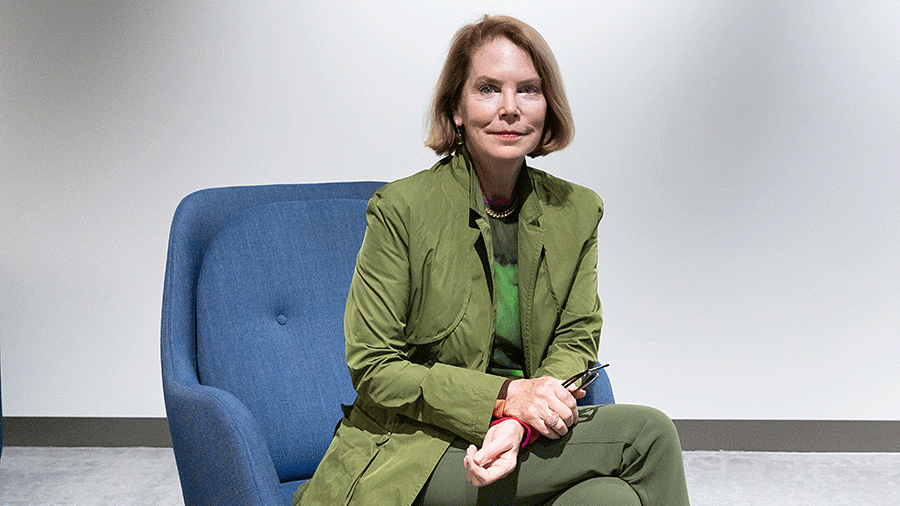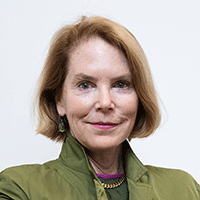Getting to know Jill Helms: Technology Transfer’s ‘next-level mentoring’ brings innovations to life

When it comes to bringing innovations to market, funding is just one piece of the puzzle, according to scientist, educator, innovator, and the AO's Technology Transfer Board member Jill Helms, DDS, PhD. Under a single umbrella, the AO's Technology Transfer brings together innovative ideas, funding, next-level mentoring from its network of surgeon entrepreneurs, researchers, investment professionals, and operations experts with real-life know-how.
Helms knows the innovation landscape like the back of her hand: In addition to her role as a professor of surgery in the Stanford University School of Medicine’s Division of Plastic and Reconstructive Surgery, she is leading scientist in the field of stem cell biology and longevity. She is the chief scientific officer of biopharmaceutical company Ankasa Regenerative Medicine, which has developed of novel, protein-based stem cell activation therapy—based on Helms’ own research—to improve tissue repair and regeneration.
‘A tremendous boon’
“The diversity of the AO's Technology Transfer Board members’ experience and expertise is an enormous strength. I know how hard it is to be on the ‘other side’ as an innovator, and it would have been great to have had such a group of experts guiding me through that early-stage process,” said Helms. “I was fortunate to have had other mentors but having access to a resource like the AO's Technology Transfer group would have been a tremendous boon.”
Its ability to bring together researchers, surgeons, and industry experts to work for innovators ideas—along with its willingness to cross traditional boundaries and support disruptive ideas—sets it apart, she said.
“The most common strategy for people who have what they perceive as an innovative solution is to try to determine if, in fact, their idea is unique. They may try to do that through patent searchers or talking to colleagues, but that approach really is only the tip of the iceberg when it comes to finding out whether the idea is really new,” Helms said. “That’s the first place that the AO's Technology Transfer Board really makes a difference.”
Moving ideas forward
Attracting interest is another hurdle most innovators face—and yet another obstacle the AO's Technology Transfer is adept at overcoming.
“Attracting interest in and funding for a novel idea at an early stage, when there may not even be a prototype, is a challenging step,” Helms said. “If you don’t have access to grants to fund your early-stage idea, you just have to shop your idea around—extremely challenging if you don’t have a network of experts who are used to looking at new technologies and can guide you.”

“Just do it: Apply for Technology Transfer support. Submit your idea. At the very least, you will get some valuable feedback that will invariably help move your project forward”
Jill Helms
A global network of experts
The AO’s global network of 520,000 surgeons with expertise in trauma and musculoskeletal disorders is another value add for Technology Transfer partners, she said.
“This network is resource for validating ideas with experts in the field who can also offer critical assessments and a supportive environment,” Helms noted. “Even when an idea isn’t quite ready for us, applicants can gain a lot of expertise and insights from going through the application process.”
Innovators who receive AO's Technology Transfer support have access to an array of expertise, she said.
“Our board members’ skillsets range from deep clinical expertise to venture capital experience to biology and engineering expertise,” said Helms. “The AO’s Technology Transfer has vast experience in commercializing ideas, the next steps in the process, and how to get in front of a regulatory board, for example.”
Do you have an idea to potentially improve patient care or surgeon education?
Visionary leadership
Moreover, she said, the board is visionary enough to confidently take on projects that other partners would decline as being too early or unrealistic.
“In recent years, we’re very interested in—for example—products driven by artificial intelligence and apps that help with diagnosis or treatment planning, or maybe even projection of the healing success rate,” Helms said.
‘Just do it’
Helms’ advice for innovators is simple.
“Just do it: Apply for Technology Transfer support. Submit your idea. At the very least, you will get some valuable feedback that will invariably help move your project forward,” she said. “And persevere. If you get a ‘not yet’ from us, you can take our feedback on board, and apply again. Perseverance is the key here to success”
She also encourages people who might not see themselves as innovators or entrepreneurs to avail themselves of AO's support.
“I would strongly urge people—for example, women and people of color—who may not see themselves represented among entrepreneurs and innovators to submit their ideas,” said Helms. “You know, talent is equally distributed, but opportunity is not. So, I want to especially encourage underrepresented groups to take advantage of the AO's Technology Transfer opportunities. It’s a fantastic group of people who are eager to help you realize your innovation ideas!”
You might also be interested in:
- Find out how we drive your idea toward success with expertise and funding
- Learning about Development Incubator projects
- Learning about Strategy Fund projects
- AO's innovation funding frequently asked questions

